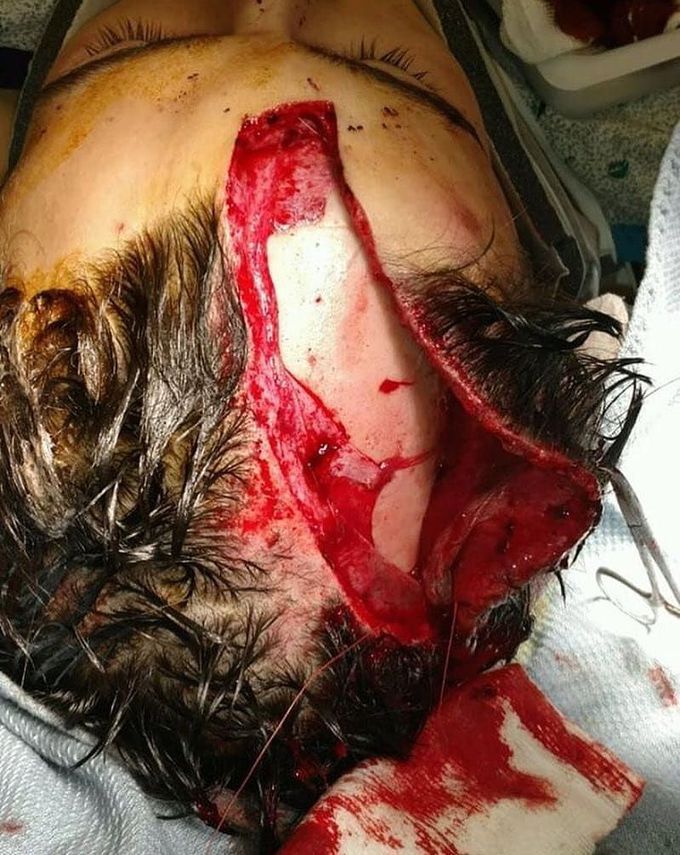


Extensive laceration injury to the scalp!
Scalp lacerations are a common injury. Clinical evaluation should identify associated serious head injury, laceration of the galea, or bony defect of the skull. The scalp should be examined carefully to evaluate for signs of injury to the underlying structures. The layers of concern in the scalp include the subcutaneous tissue, galea aponeurosis, connective tissue and periosteum overlying the bone. Visible or palpable bony defects warrant computed tomography of the head to determine presence of intracranial injury or penetration of the wound through the skull. Control of profuse bleeding and prevention of further loss of blood is crucial. After hemostasis is achieved and the wound is irrigated, scalp lacerations are typically closed with surgical staples under local anesthesia. Sutures may be preferred over staples for large, gaping wounds and to provide hemostasis for wounds with brisk bleeding.
Hemodynamic stimuli&nonhemodynamic stimuliEffects of sugar on teeth

